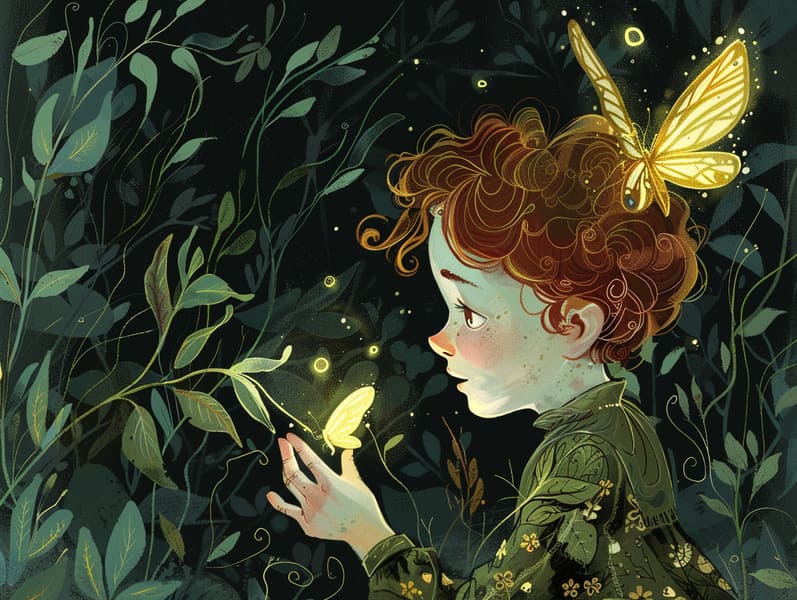
Old fairy tales have enduring presence. These stories have been passed down from one generation to the next well before they were ever put on paper. They sprang from a variety of backgrounds, including Western traditions. They were initially narrated among adults, often carrying themes and messages reflective of the societal norms and beliefs of the time.
Jacob and Wilhelm Grimm, Jacob and Wilhelm (the Grimm brothers), were among the first to collect and release many of these beloved tales. Their collection, "Grimm's Children's Stories," included classics like "Cinder Maid," "Hansel and Grethel," and "Snow-White and Rose-Red," which have since become staples in the world of iconic fairy tales. Similarly, H. C. Andersen's whimsical narratives, such as "The Mermaid," and "The Duckling's Story," have captivated hearts worldwide, guaranteeing their place in the pantheon of timeless fairy tales.
Despite their historical roots, traditional fairy tales remain as impactful as ever, especially as bedtime stories for kids. These delightful tales are now available in numerous formats, including vibrantly illustrated books, whimsical animations, and online storybooks.
Their persistent charm can be credited to several enchanting factors:
Crucial Morals: Traditional fairy tales often whisper important moral lessons. Tales like "The Shepherd Boy and the Wolf" teach the importance of sincerity, while "The Race of the Tortoise and the Hare" stress the values of resolve and humbleness. These stories offer little ones clear distinctions between moral and immoral, shaping their moral compass in a soft yet profound way.
Sympathy and Perception: Ancient fairy tales frequently present characters facing problems and hurdles, motivating children to identify with their struggles and boost their triumphs. For instance, "Beauty's Beast" points out the value of valuing inner qualities to understand the real character of a soul, enhancing warmth and discernment.
Cultural Appreciation: Many ancient fairy tales are interwoven with the cultural contexts from which they arose. Immersing in these stories can provide informative snapshots into different backgrounds, strengthening a sense of cultural understanding and awareness.
Fantasy and Imagination: The mythical elements in timeless fairy tales—magical spells—fuel children’s dreams. These stories take readers to imaginary realms, engendering fantastical thinking and a sense of wonder that endures a lifetime.
Timeless fairy tales are not only alluring but also educational. They serve as mesmerizing tools in strengthening various cognitive and emotional skills in little ones. When old fairy tales are told out loud, they promote linguistic abilities by bringing new word meanings and elaborate sentence structures. This practice also enhances hearing perception and attentiveness, as kids keep up with the story, keen to see what happens next.
Furthermore, examining the themes and characters of ancient fairy tales can develop evaluative skills and intellectual skills. Children are educated to spot patterns, guess what will happen, and know cause and effect. These deliberations also promote young readers reveal their thoughts and feelings, nurturing their emotional intelligence.
In today’s information age, the prevalence of free fairy tales online has made these narratives more available than ever. Digital sites and online apps give broad selections of timeless fairy tales that can be perused or listened to anytime, anywhere. Fairy tales recited are particularly liked, sharing an immersive method for young ones to delight in these magical stories. Voice books and read-out-loud stories lead characters and settings to life, often accompanied by spellbinding music and melodies that augment the tale experience.
The unfading fascination of classic fairy tales lies in their ability to shift to the present while retaining their essential themes. Contemporary modernizations of these tales often introduce more varied characters and modern settings, making them meaningful to today’s audience. However, the basic principles of spirit, sympathy, and fair play remain unchanged, continuing to move readers of all ages.
Traditional fairy tales also offer a sense of contentment and homeliness. here They provide a orderly narrative with a apparent beginning, middle, and end, often coming to a close with the wrap-up of conflicts and the triumph of right over wrong. This dependability can be soothing for young readers, extending a sense of security in an unpredictable world.
Ancient fairy tales continue to captivate and educate new generations, maintaining their radiance and meaningfulness in modern society. As kids' bedtime tales, they introduce a perfect blend of fascination and comprehension, facilitating moral values, empathy, and creativity. The prevalence of internet fairy tales and the favor of fairy tales read aloud make sure that these old fairy tales remain obtainable to new generations.
By protecting and narrating these fairy tales, we continue to celebrate the rich tapestry of creativity and cultural heritage. Whether you are enjoying a beautifully illustrated book, viewing a digital library, or listening via an voice book, the enchantment of children's fairy tales is always within reach. These stories remind us of the endless essence of fairy tales and its ability to hold us together across time and space.
No matter if you are exploring a beautifully illustrated book, accessing a virtual collection, or listening through an spoken story, the delight of ancient fairy tales is always within reach.
These stories point out of the lasting presence of tales and its ability to draw us together across eras and regions, forming a connection that captivates and teaches alike.